Avian infectious encephalomyelitis is an infectious disease that mainly affects young poultry. This disease was of real economic importance until the advent of vaccination, which considerably reduced its impact.
The disease agent and its pathogenicity
- Avian encephalomyelitis is caused by a virus of the Picornaviridae family, an RNA virus. Currently, this virus is assimilated to the genus Hepatovirus ; so it is close to the hepatitis A virus. It is a small virus, 20-30 nm in diameter. All isolated AVRs are so far of the same serotype.
- The virus is very resistant in the external environment, but it is sensitive to most common disinfectants.
- The virus multiplies on 2 levels : in the intestine and in the nervous system. It first multiplies in the duodenum. There is then a phase of viremia and the virus spreads to the viscera and muscles.
If the breeding hen is infected or vaccinated, it can transmit protective neutralizing antibodies to her offspring that will protect the chicks for about 3 weeks.
Epidemiological data
- The disease occurs in animals less than 3 weeks old, sometimes up to 6 weeks old. Contaminated birds after 3 weeks of age do not develop the disease, except laying hens.
- The disease is found in hens, pheasants, quail and turkeys.
- Transmission of encephalomyelitis is essentially vertical, with viral excretion in the egg for about 13 days after infection.
The incubation of the disease in chicks is then 1 to 7 days. - Transmission can also be horizontal in adults or chicks that have just hatched in contact with contaminated chicks (possible transmission in the hatchery).
The incubation period is then 11 days. - The virus is excreted in the faeces and the infection occurs mainly as a result of ingestion of contaminated materials. The duration of excretion in droppings is variable, from 2 weeks for very young birds to 5 days in infected birds after 3 weeks.
Clinical manifestations of the disease
Symptoms in chicks
- The disease occurs mainly in youngs under 3 weeks of age.
- In egg-contaminated subjects, the signs are non-specific and there is a slight increase in mortality in the first 10 days of life.
- Contaminated birds at or after hatching show signs at about 2-4 weeks. They have progressive muscle ataxia. The chicks remain seated on their tibio-metatarsal joints, move less and less and have tremors of the head and neck.
- Mortality varies from 25 to 50% depending on the strain and virulence of the virus.
- Survivors have growth retardation and cataracts. Ataxia and mild paralysis are sometimes observed in 6-week-old birds.
Symptoms in breeding animals
- Encephalomyelitis is manifested in laying birds by a drop in egg laying.
- The damage at the beginning of egg laying causes a slight drop, but the ascent is long and incomplete.
- The damage during egg laying causes a sudden drop with a rapid return to normal within 2 weeks.
- There is also a decrease in the fertility and hatchability of hatching eggs.
Lesions
- In breeding animals, only a cataract (possibly) is noticed.
- In chicks, white foci can be seen in the muscles of the gizzard.
- At histology, lymphocyte infiltrations into proventriculus, gizzard and pancreas, and sometimes into the brain, a disseminated non-purulent encephalomyelitis is noted, characterized by perivascular sheath.
The diagnosis
Clinical diagnosis
The clinic can refer to encephalomyelitis with signs of tremors and possibly flaccid paralysis, on chicks less than 3 weeks old. The necropsy did not show any characteristic signs.
Laboratory diagnosis
Virological tests can be performed on samples from the brain, pancreas, duodenum, 5-7 day-old embryo yolk sac, or on embryo brain culture by immunofluorescence. Histology is a test of choice. Serological methods are used to assess the level of antibodies in breeding animals. Molecular analyses (RT-PCR) are possible, but only for a few specialized laboratories.
Differential diagnosis
Encephalomalacia (vitamin E/Se deficiency), Marek’s disease, Newcastle disease, vitamin B1 deficiencies, intoxications, aspergillosis (nervous signs on chicks).
Disease prevention and control
- There is no specific treatment. It may be advisable to isolate sick animals.
- Breeding animals are vaccinated between 8 weeks and 4 weeks before laying to protect the chicks. It is a live attenuated vaccine. Vaccination is done orally in drinking water or by eye-drop.







